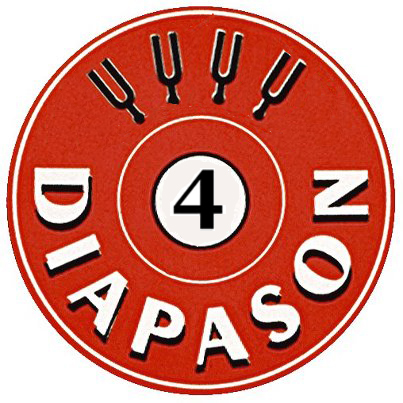Hungarian Radio Symphony Orchestra, Ádám Fischer Zoltán Kodály: János Háry-Suite – Summer Evening – Variations on a Hungarian Folk Song (The Peacock)
The average concert-goer thinks of Zoltán Kodály as a composer of choral works and the creator of a concept of music pedagogy known world-wide by his name. Yet his oeuvre is also rich in chamber works, songs and orchestral pieces; indeed, he wrote pieces for the latter apparatus throughout his career as a composer.
About the album
Recorded at Studio 22 of the Hungarian Radio, May, 2007
Music editor: Zoltán Göncz
Recording producer: Gusztáv Bárány
Balance engineer: Gábor Buczkó
Digital editor: Mariann Czéh
Cover Art-Smart by GABMER / Bachman
Produced by László Gőz, Co-produced by the Hungarian Radio
Executive producer: Tamás Bognár
In association with the Hungarian Radio (MR) and Summa Artium
The recording was sponsored by the National Cultural Fund of Hungary
Reviews
John Warrack - International Record Review (en)
Victor Carr Jr. - ClassicsToday.com (en)
Tony Haywood - MusicWeb International (en)
Christophe Huss - ClassicsTodayFrance.com (fr)
Rémy Franck - Pizzicato **** (fr)
Pierre-Emile Barbier - Diapason - 4 diapasons (fr)
Gidelher Schubert - Fono Forum *** (de)
Luca Segalla - Musica **** (it)
Cesare Fertonani - Amadeus **** (it)
Santiago Martín Bermúdez - Scherzo (es)
Benjamin Fontvella - CD Compact (es)
Molnár Szabolcs - Gramofon **** (hu)
Porrectus - Muzsika (hu)
Devich Márton - Heti Válasz (hu)
Csont András - Magyar Narancs (hu)
Galamb Zoltán - Ekultura.hu (hu)
Matheika Gábor - Café Momus (hu)
Zoltán Kodály: Háry János-Suite
Zoltán Kodály:
Zoltán Kodály:
The album is available in digital form at our retail partners
The average concert-goer thinks of Zoltán Kodály as a composer of choral works and the creator of a concept of music pedagogy known world-wide by his name. Yet his oeuvre is also rich in chamber works, songs and orchestral pieces; indeed, he wrote pieces for the latter apparatus throughout his career as a composer. Of his rarely played orchestral pieces, perhaps the best known is the Háry János Suite from 1926-27, which was conceivably put together on Béla Bartók’s recommendation. Its popularity is no doubt due to the fact that the Singspiel (1925-27) from which it was taken hit the light tone appropriate to its comical subject. The suite highlights the six most colourful movements of the four episodes of The Adventures of Háry János from Nagyabony to Vienna-ville. The first movement, The Fairy Tale Begins, starts with the famous ‘sneeze effect’ from the stage work. Following this, a melody reminiscent of a Hungarian folk song on the lower strings leads us into the world of the fairy tale – a solution which shows a distant link to the beginning of Bartók’s opera, Bluebeard’s Castle. Two other movements (the third and the fifth) also draw on the Hungarian material in the opera: the Song takes a Hungarian folk song which appears as a symbol of the motherland (Tiszán innen, Dunán túl) and casts it in variation form, while the Intermezzo conjures up the eighteenth-century verbunkos tradition; the first part of its three-part form is from István Gáti’s piano method published in 1802, while the trio is an arrangement of a work by János Bihari.
The Viennese Musical Clock (second movement) with its tinkling percussion, the Battle and Defeat of Napoleon with its ridicule of the Marseillaise (fourth movement), and the Entrance of the Emperor and his Court which conjures up the chinoiserie popular in the eighteenth century (sixth movement) relate to the parts of the Singspiel associated with the Austrian court and the French army, and which are both grotesque-ironic and have a playful fairytale sparkle. As Kodály wrote, the Austrian-French world appears as it would to a peasant’s imagination. The selection undoubtedly had a promotional purpose: Kodály’s publishers, Universal Edition in Vienna, had an authorised suite version made of the stage works of almost all their composers, because these were easier to have performed than the entire operas or ballets, and this increased the number of performances, thus swelling the publishers’ revenue.
Kodály’s first mature adult composition, the Nyári Este (Summer Evening) composed in August and September 1906, was also for orchestra. The history of the piece, however, was unique in the composer’s career. It was written for his degree, and was first performed on 22 October 1906 in Budapest, after which it was only performed on two other occasions before Kodály hid it away like so many other of the pieces he had written while studying at the music academy. However, in 1928, Arturo Toscanini, who at the time was giving the premiere of Kodály’s oratorical work Psalmus hungaricus at La Scala in Milan, asked the composer to write an orchestral piece. Kodály did not undertake to write a new work, but reworked his youthful creation. In the foreword to the printed miniature score he gave an explanation for this unusual procedure: “From time to time, if we scrutinise the work we have done, we see more clearly than anyone the errors, the weaknesses. We feel that today it would work out better, if only we could do it once more. [...] If I have now put right the errors made when half my current age, my thanks are due to a great master. His example and his word, bidding me to work, renewed in me the sense of responsibility, that eternal dissatisfaction, which desires to start everything afresh.” As a sign of his thanks he dedicated his old-new composition to Toscanini.
Recent research shows that the extent of the reworking was rather minimal. Kodály retained the simple formal outline of the work with its A-B-A structure; he made no changes in the composition of the small orchestra (strings, woodwinds and two horns); nor did he touch the rather conservative harmony, strongly rooted in tonality. Rather, he concentrated on putting the folk music elements of the piece into sharper relief. The earlier version already testifies to the experience of the young composer and ethnomusicologist’s 1905 field trip, in so far as it contains many pentatonic turns of phrase, even though Kodály had at this time not yet formulated his ideal of the new Hungarian music. Following the composition of Nyári Este came the composer’s study trip to Berlin and Paris, which was to be of great importance, since it was then that he encountered the music of Claude Debussy. Only years later did he become conscious of his folk music experiences – including his recognition of the significance of the pentatonic scale.
The third composition on this disc, however, the Variations on a Hungarian Folk Song “The Peacock”, shows the essence of Kodály’s concept of the new Hungarian music in all its glory. The theme, the famous peacock melody, is pentatonic, and is an example of the oldest type of Hungarian folk music. This orchestral work, consisting of an introduction, 16 variations and an extensive finale – a successor to Beethoven’s Eroica, or Brahms’ Hadyn variations – is partly built of character variations: the tenth variation plays with Chinese colours, the thirteenth conjures up the type of the funeral march, while the fourteenth imitates shepherd’s pipes. In addition, certain variations evoke the mood of earlier Kodály works (the Psalmus hungaricus, the Dances of Marosszék and Galánta, Háry János and the Concerto for Orchestra). On the other hand, the series of variations is characterised by motivic development derived from Beethoven. Kodály himself said that “no specialist musical knowledge is needed” to understand the composition. “But one needs to know the folksong from which it has grown, like a flower.” Indeed, at every point in the work can be heard a three-note formula, which can be understood to be the essence of the folk song, and which thus functions as the kernel of the entire composition. Even the new folk song unexpectedly heard in the finale (Az ürögi utca sikeres) is built on this formula – the two folk songs belong to the same melodic family.
However, the “Peacock” Variations are also related to something other than the folksong. Another source for the orchestral work may have been the poem The Peacock Took Flight by Endre Ady, who served as an ideal for the creation of modern Hungarian art to the young Kodály. Many parallels can be found between the two works: the poem itself follows a variation form in the musical sense, Ady using two versions of motivic development. He either picks on a motif from the previous strophe and develops it in the following one, or reaches for a motif from much earlier and works out that. Kodály uses a similar solution in his set of variations, as he gives the work a tight structure not only by drawing on the core of the Peacock melody, but also by linking the variations together. The codetta of each variation generally contains the musical gesture which, further developed, will start off the following variation. In addition, the musical types in Kodály’s work evoke the images in Ady’s poem. In part, these variations are those (the ninth and eleventh, for example) in which Kodály’s typical patriotic voice can be heard. But the reference is even clearer in the fourteenth variation’s cadenza-like flute solo (reminiscent of a folk recorder) which here becomes a symbol of Ady-esque “woeful, Hungarian life”. The death scene of the twelfth variation, and the funeral march of the thirteenth refer to the symbol of the death of the nation intimated in Ady’s poem. And as in Ady’s poem the dichotomy of either-or, hope and despondency appear simultaneously, so too Kodály’s variations build on pairs of opposites. This is best shown by the finale, in which although the “Peacock” melody, enveloped in the ethereal sound of the flute and harp, reaches its apotheosis, this ascent (featuring a type characteristic in Kodály’s oeuvre, the voice of God from Psalmus hungaricus) is incorporated into a developmental, fragmented finale which shows the reverse side of the melody. With its ugliness, the song Az ürögi utca sikeres seems to thumb its nose at the symbol of freedom of the “Peacock” melody. After the closing chords of the work we may wonder: did the peacock take flight, or flee?
Anna Dalos
Translated by Richard Robinson

